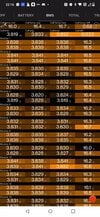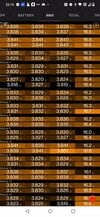I have a 2013 Model S 60kWh that I bought used in 2016 as a commuter car. It has only 56K miles on it, but of course is out of warranty. I have never had any trouble with drivability or power until one morning about a week ago it refused to drive (error codes below). I had driven it fine the previous day but had not plugged it in to charge overnight. It had over 100 miles of charge left at the time. The next morning it still showed that much charge but had these errors and would not shift into gear. The vehicle was able to open the charge port, but for some reason it did not unlock the port so I could not connect a cable, and at the time I was not aware that there is a hidden manual release lever for the lock. So I promptly arranged for a tow to the service center. The 12V power also was intermittent because the display would keep powering off and wouldn't reliably power back on, and we had to jump the 12V battery to get it into tow mode.
From speaking with the Tesla service people since then, Tesla has not physically inspected the car at all, but rather has just said that based on the error codes it is a problem internal to the high-voltage battery pack and the only option they offer is replacement, with the cheapest option being a remanufactured 75kWh battery for ~$15K with tax (that's without paying an extra $2250 for the extra range to be unlocked). That's nearly the vehicle's market value, though on the plus side the remanufactured part would have a 4 year / 50K mile warranty. Third-party battery replacement estimates from 057tech, recell-ev, and Electrified Garage are not any more cost-effective due to the low third-party salvage value of 60kWh packs. Gruber Motors's repair service is more cost-effective, but I understand that a lot people say their "repair" process is unsound, and in any event they have an 8 month waitlist.
So I am left wondering whether this fault might have cleared if I had used the charge port manual release lever to unlock the charge port and charged it rather than immediately towing it to Tesla. Not only was the car not charged overnight, but it also hadn't been charged to 100% in years (usually I've set the limit at 80%). I asked the service center if they would do this for me but they refused, stating that the battery's charge and its drivability are unrelated and they don't want to bother with towing it the short distance and getting power to the 12V system (despite me offering to pay the labor for that). One could interpret this as being a sign that they have enough experience to know that it can't possibly help, or one could interpret this as being a sign that they simply don't care to attempt a cheap fix when they can push an expensive fix instead. They have also refused to provide any more details on their diagnosis, so I have no way to assess their competence.
So I'm here to ask the community what it thinks. Should I tow this car back home and try to charge it, or should I trust Tesla that it's impossible?
DI_u014
GTW_w157
GTW_w017
GTW_w018
BMS_u008
BMS_w107
BMS_f107
(the key fob battery warning was already there for a week or so)

From speaking with the Tesla service people since then, Tesla has not physically inspected the car at all, but rather has just said that based on the error codes it is a problem internal to the high-voltage battery pack and the only option they offer is replacement, with the cheapest option being a remanufactured 75kWh battery for ~$15K with tax (that's without paying an extra $2250 for the extra range to be unlocked). That's nearly the vehicle's market value, though on the plus side the remanufactured part would have a 4 year / 50K mile warranty. Third-party battery replacement estimates from 057tech, recell-ev, and Electrified Garage are not any more cost-effective due to the low third-party salvage value of 60kWh packs. Gruber Motors's repair service is more cost-effective, but I understand that a lot people say their "repair" process is unsound, and in any event they have an 8 month waitlist.
So I am left wondering whether this fault might have cleared if I had used the charge port manual release lever to unlock the charge port and charged it rather than immediately towing it to Tesla. Not only was the car not charged overnight, but it also hadn't been charged to 100% in years (usually I've set the limit at 80%). I asked the service center if they would do this for me but they refused, stating that the battery's charge and its drivability are unrelated and they don't want to bother with towing it the short distance and getting power to the 12V system (despite me offering to pay the labor for that). One could interpret this as being a sign that they have enough experience to know that it can't possibly help, or one could interpret this as being a sign that they simply don't care to attempt a cheap fix when they can push an expensive fix instead. They have also refused to provide any more details on their diagnosis, so I have no way to assess their competence.
So I'm here to ask the community what it thinks. Should I tow this car back home and try to charge it, or should I trust Tesla that it's impossible?
DI_u014
GTW_w157
GTW_w017
GTW_w018
BMS_u008
BMS_w107
BMS_f107
(the key fob battery warning was already there for a week or so)




